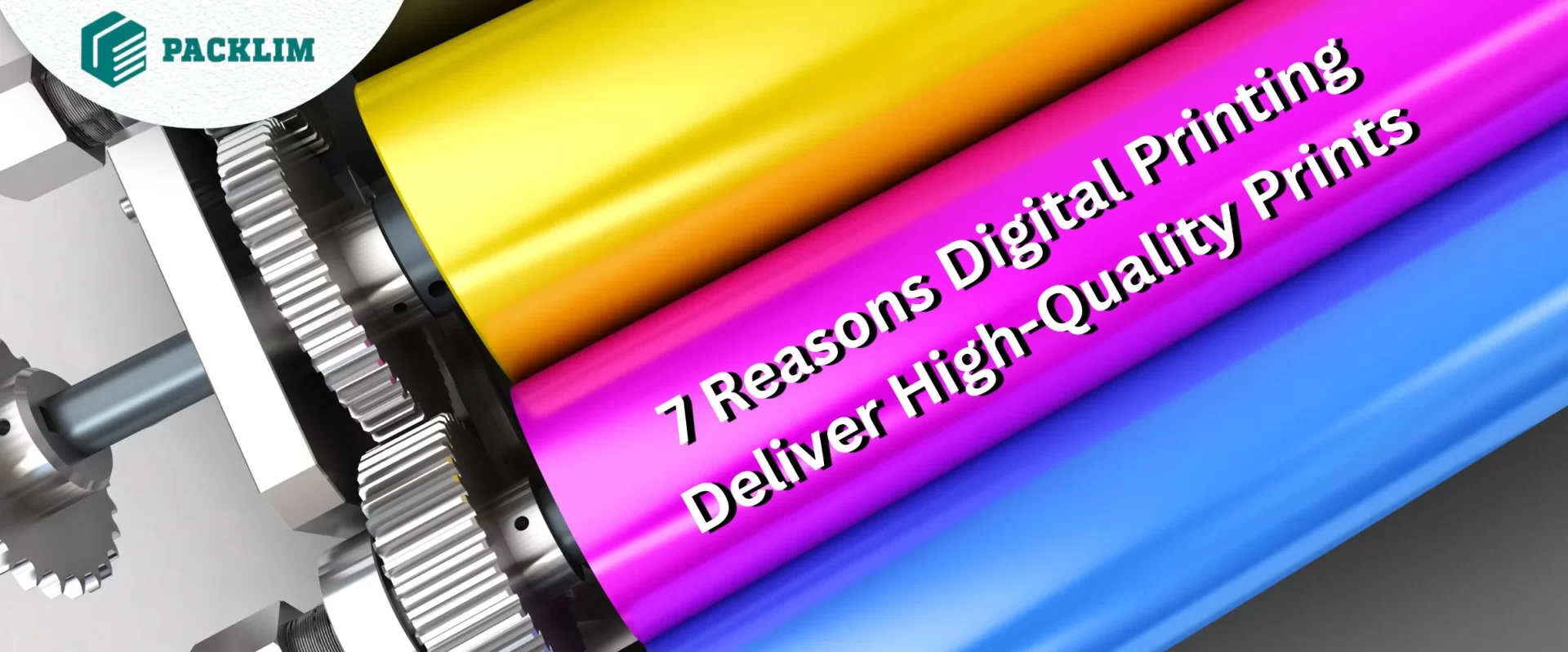
7 Reasons Digital Printing Deliver High-Quality Prints
Digital printing has brought a lot of changes to the printing industry since it has been widely accepted due to the various benefits it offers. Here are seven reasons why digital printing delivers high-quality prints:
1. Precision and Color Accuracy
Advanced Color Management
Digital printers employ complex color management techniques, making it easier to achieve the required color quality in complicated designs in custom packaging boxes.
Consistent Quality
Digital printing does not produce shades as traditional printing does, making it more accurate compared to traditional methods.
2. Versatility and Customization
Wide Range of Substrates
Digital print is versatile regarding the substrate it can be printed on, ranging from paper and card to unconventional media such as canvas and metal.
Customization Options
Digital printing also enables designers to easily make changes to the actual design, making it appropriate for custom-made products and small batch production.
3. High-Resolution Output
Sharp Details
Digital printers are useful in that they can print images with sharp texts, fine lines, and a lot of detailing. This feature makes digital printing play an integral role in making custom burger boxes, pizza boxes and custom hot dog boxes.
Image Quality
Digital printing effectively produces fine details in photographs and graphics compared to other types of printing.
4. Speed and Efficiency
Quick Turnaround
Since digital printing is done electronically, there is faster resolution, making it suitable for projects that need to be done quickly or for smaller quantities of prints.
Reduced Setup Time
Compared to other forms of printing techniques, digital printing does not take time or money to set up, as is the case with traditional methods.
5. Variable Data Printing
Personalization
Digital printing permits the various data presentations, meaning that one can print different information or messages on the same print.
Targeted Marketing
This feature proves useful in targeted marketing and the use of direct mail to a targeted list of clients.
6. Cost-Effective for Short Runs
Reduced Waste
Unlike traditional printing, which requires large numbers of prints to recover costs, digital printing allows for printing only the required number, making it cheaper for short runs.
Flexibility
This flexibility enables businesses to meet the new demand for products without necessarily having to invest in commodities that may take long to sell.
7. Environmental Friendliness
Reduced Waste
Digital printing is more environmentally friendly since it results in less waste than conventional methods of printing.
Energy Efficiency
Some digital printers are known to be energy savers, which also helps in conserving energy.
What are the advantages digital screen printing machine?
Digital screen printing machines, also called hybrid screen printers, incorporate the features of both digital printers and traditional screen printers. These machines offer several advantages:
Versatility
They can work with a number of substrates and print designs and are capable of delivering high detail.
Efficiency
Computer-aided printing cuts the development of film as part of its process, thus improving efficiency.
Accuracy
Fine registration and accurate color management guarantee that high-quality prints are achieved.
Cost-Effectiveness
While the setup cost might be higher in the case of digital screen printing, it is cheaper and more efficient for small orders or where there are many variations in orders.
Digital Printing Vs Screen Printing: Which is better?
When it comes to digital printing and screen printing, both are used depending upon the project need. Here’s a brief comparison:
Digital Printing
Ideal For
Small volumes, a high frequency of change, complicated graphic plates, and variable information printing.
Advantages
Durability: Copy machines do not have the sturdiness of a commercial printing press.
Flexibility: Copy machines are versatile, fast, accurate with short runs, and at a lower cost.
Disadvantages
Initial costs are higher; costs per unit may also be higher for long runs.
Screen Printing
Ideal For
Large runs, plain designs, and large quantity productions are some of the areas where this concept is more likely to be used.
Advantages
More affordable per unit for large volumes, more long-lasting, and better for specific substrates.
Disadvantages
Restricted color options, slow turnaround, and high cost of plates.
Features in screen printing digital machine
Digital screen printing machines incorporate several advanced features:
High-Resolution Printing
They can make prints with small specs and clear texts.
Color Accuracy
High accuracy of color as well as color reproduction ensures good results concerning the design.
Variable Data Printing
This feature makes it possible to print text that varies with other pieces of similar products, allowing a given piece to bear different information from another.
Automation
Most digital screen printers incorporate automation into their processes to minimize mistakes.
Integration Capabilities
They can be interfaced with other systems to enhance the overall process flow.
What are the advantages of digital label printing?
Digital label printing has gained significant popularity due to its numerous advantages:
Customization
A label may be of any design and size and may be available in any type of finish.
Short Turnaround Times
Being an electronic printing technique, digital printing is suitable for labeling since it does not require large numbers of labels to be printed at a time.
Versioning
Additional copies of a label can be produced with distinctions, allowing for different versions to be utilized.
Cost-Effectiveness
Digital technology of label making is more economical for short labels and frequent changes in the labels.
High-Quality Output
Due to digital label printers, it is possible to get clear digital labels and labels with bright colors and clean images.
5 core differences between screen and digital printing
Here are the key differences between screen and digital printing:
Printing Method
Screen printing employs the use of a mesh and putting ink through it, while digital printing uses a laser or inkjet to produce the desired image on the substrate.
Setup Time
Screen printing takes more practice time than textile printing due to the techniques used in making stencils and registering screens.
Cost
Digital printing has higher initial costs yet less per unit for short production, while screen printing takes lower initial costs yet more per unit for short production.
Versatility
The technological applications of digital printers are more flexible in the number and kind of designs and materials available compared to traditional printing.
Speed
Digital printing is quicker for small production runs and more frequently changing designs.
Conclusion
Digital printing has increasingly become popular as a technique for adopting versatile methods of quality print production. Its versatility, speed, and accuracy, coupled with a relatively lower cost compared to other methods, make it a perfect solution for businesses that desire the best from their printers. When deciding on a printing method, it is necessary to know the benefits and characteristics of digital printing.
FAQs
Why digital printing is important?
Digital printing is right for different applications, explained by its flexibility, speed, and cost. This form is best suited for sequential production, custom-made parts, and when there are frequent design changes.
What controls the quality of prints in digital printing?
The quality of digital prints is maintained by factors such as the image resolution of the scanned picture, types of ink used, the kind of paper used, and the calibration of the printer.
What is digital foil printing?
Digital foil printing is a printing technique that uses foil to produce a foil-in foil-out appearance on products made of metal enamel. This type is especially applied to luxury packaging, cards, and invitations.
What is the difference between screen and digital printing?
For large pieces and repetition, screen printing is the most effective, while digital printing is effective for small runs and complicated designs. This technology uses one screen for each color, while digital printing applies all colors at once in the process.

